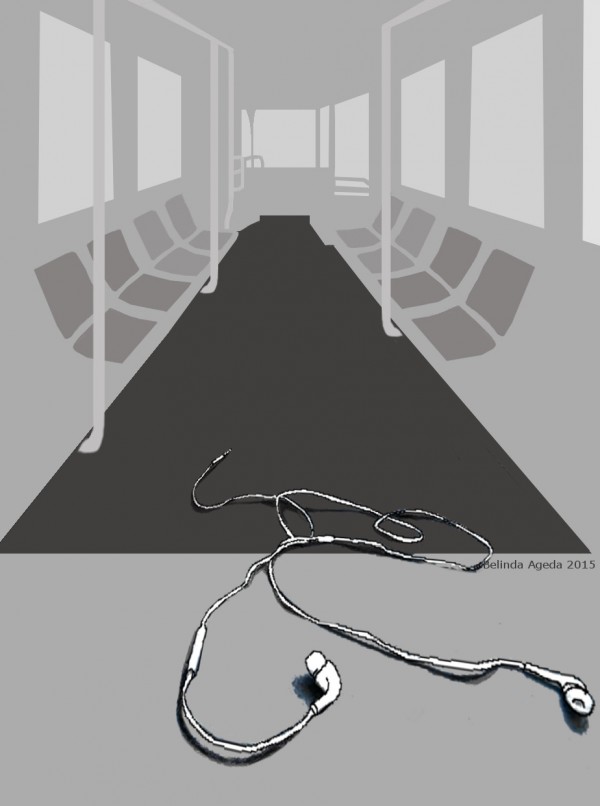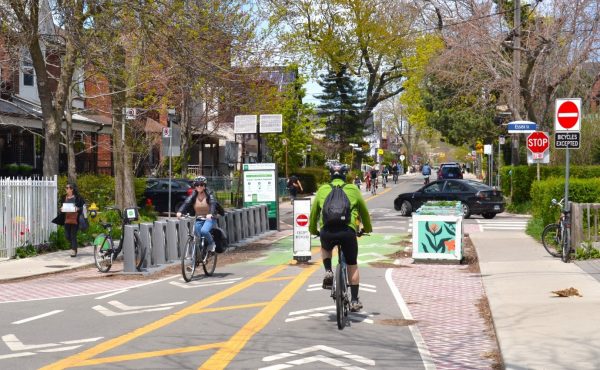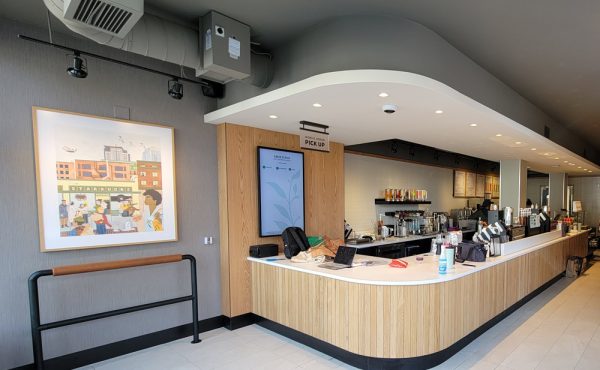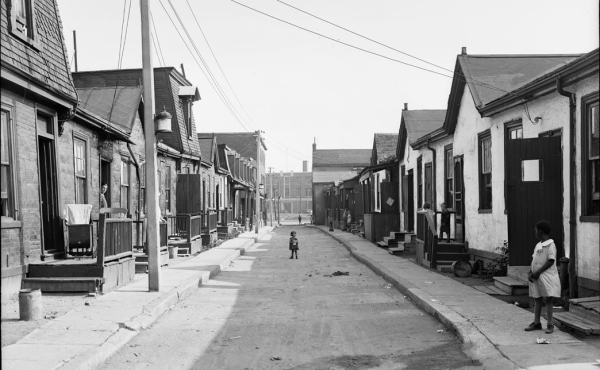“I only knew something was wrong when he ripped my headphones from my ears, grabbed me by the back of my neck, bent my right leg and shoved me off the seat, throwing in a punch or two as I fell.”
This public transit attack happened to Andrea when she was attending college. A male passenger thought that she was in fact a “he” and decided to teach Andrea a lesson for not giving up her seat to an elderly lady who boarded the bus. In addition to not knowing Andrea’s gender, this man also didn’t know that Andrea and the elderly lady were actually good acquaintances. They regularly rode the same express bus, exchanging smiles as they settled into their seats for their respective journeys.
Andrea did not see the attack coming. After all, why would she? Most of us don’t expect to be violently assaulted while travelling on public transit. Besides, she was seated directly behind the driver listening to Broadway tunes. During the attack Andrea recalls the man referring to her as a boy, and admonishing her for having her feet on the seat. Although wounded and deeply ashamed, (she explains the irrational embarrassment she experienced for having been made the centre of unwanted violence and attention), she managed to retort, “My feet were not on the seat. And I’m a f*cking girl, you moron!” His only defense was that if she truly was a girl, she should dress like one and style her hair differently.
And there you have it.
One of the most complex and emergent issues we have in terms of ensuring the safety of everyone within the public sphere (including transit), is the public response to gender non-conformity. A number of gender non conforming individuals, as well as experts, have highlighted the tension that is created in public spaces when large groups, law enforcement, or service providers sense that something is different about an individual’s gender identity or performance.
Many of us become uncomfortable, suspicious, fearful, or even violent when an individual doesn’t fit within the male and female binaries or containers we’ve been using for centuries. Interestingly, the real threat is squarely faced by the individual outside of the gender binary. Furthermore, there is massive confusion between sex (pertaining to biology) and gender (pertaining to social roles). Inappropriate interchange of these two concepts coupled with ongoing struggles with the breadth of human diversity contribute to public sphere hotspots (including transit) for gender non conforming and transgendered people.
When first grasping this idea, I found it helpful to think of gender as a spectrum. Many people identify and present as male OR female. However, on this spectrum, there are also people who identify as genderqueer, gender fluid, transsexual, and gender non-conforming.
Although exploring the gender non-conformity and transgendered identity from a marketing and clothing angle, this PBS NewsHour segment highlights the ways that gender non-conforming and transgendered individuals are embracing their authentic selves while pushing back against public invisibility and erasure. More in depth explorations, like this recent episode of Doc Zone comprehensively unpacks variances of experiences, social attitudes, and biological misconceptions. This emerging conversation is both challenging and positive. Sadly, it is also leaps and bounds ahead of public space policy, urban infrastructure, and facility management practices.
To further complicate this matter, the bulk of emerging research focused on this issue addresses public spaces such as shelters, bathrooms, and detention centres/prisons not public transit. For example, upon examining self-report surveys and needs assessments, hot-line call and social service records, and police reports, Rebecca L. Stotzer found that, “Violence against transgender people starts early in life, that transgender people are at risk for multiple types and incidences of violence, and that this threat lasts throughout their lives.”
My public transit exchanges with gender non-conforming and transgendered women anecdotally support these findings. A lesbian, non-conforming woman explained it to me this way- “When you’re walking down the street or biking you can quickly escape the disgusted glances, cruel words, and potential physical attacks; on transit you’re trapped until the next stop.” Another woman revealed the shortcomings of well-meaning bus drivers who allow individuals they perceive to be women to exit the bus in between stops late at night for safety and refuse this same service to gender nonconforming women, who often face increased risks.
There are clearly a number of learning opportunities and issues related to this particular transit equity dilemma. But the one that most disturbs me is our collective silence. Andrea explained that the bus driver, also a woman, did nothing during and after the attack. She indicates that this was also the case with the vast majority of passengers. Fortunately, the elderly woman who the man was “defending” gave him an earful for his horrifying behavior and comforted Andrea for the duration of the ride. As Andrea exited the bus she turned to the bus driver and asked why she hadn’t intervened. The driver said something about not knowing what was happening and in Andrea’s view she didn’t appear to be concerned.
For Andrea, the months that followed were filled with panic attacks and finding alternate ways of getting around. She has however began using public transit on a regular basis and has had a number of wonderful exchanges with both drivers and passengers. The clarity with which Andrea shared her transit experience suggests considerable healing and insight. I suspect that I wouldn’t be able to say the same for the coward who beat a young girl unprovoked, the silent passengers, and the unresponsive bus driver.
Image Credit: Visual Artist, Belinda Ageda





5 comments
This incident is terrible. No one should be treated violently under any circumstances. It isn’t even a gender issue, but the fact that the victim is small.
The perpetrator seemed to believe he was being a hero, teaching a boy a lesson in being courteous to the elderly. (I blame all the superhero movies, in which they promote violence as the only path to heroism.) Andrea has no responsibility to give up her seat. If she does, it is a kind thing to do. Even if she were a boy, she is not obligated to do so.
What if Andrea has some health issue that she must be seated? We all have times where we are caught up in our own mind, on our smartphone and thus unaware of the surroundings. The proper way to be a hero is to ask politely. In my experience, several other people would volunteer to do so in a heartbeat. Violence is unnecessary.
As per transgender bias, it is very unfortunate. Why would anyone be unkind to people without knowing them? I can’t even begin to comprehend their motive!
This is framed as “violence against transgender people” but the vibe one gets from reading this it could easily be framed as “male thinks male on ‘male’ violence is okay and acceptable and society reinforces this when story about it glosses over this aspect”.
As for the bus driver, I wouldn’t draw any conclusions from that. Most of them are just like us and go to work each day, keep the head down, don’t want no trouble, and collect that cheque to put food on the table.
And then he exited the bus, got into his waiting big-ass SUV and sped off alone?
Here in NYC we’re much ruder than that. Screw the old lady, let her stand. Less violence that way.
I think, Anonymous, the fact that the individual was attacked and then told that it was her fault because she didn’t dress like a girl does make this an attack on a non-gender conforming person. It also can also be an issue about male on male violence, or just unnecessary violence period, but from what I’m reading it does have to do with those who don’t conform to gender stereotypes. No one should be attacked out of the blue because it’s “time to teach them a lesson”, etc, but it is important to shine a light on subjects that many people are not comfortable with. Also, do be aware that the young lady in this article is non-gender-conforming which is different than transgendered as shown by the use of the “her” and “she” pronouns.
And as for the bus driver they don’t want trouble, but they are responsible for the safety of their passengers on their bus so the least she should have done is called in the incident even if she didn’t want to get physically involved. I would hope that if someone was attacked at your workplace that you would at least call the police.
Dear Anonymous, specific comments around a person’s identity, whether they be around race, gender, religion, etc., coupled with the fact that the brutal attack was unprovoked, suggests an element of intolerance and hate. I don’t believe that the author has glossed over the issue of male on male violence. Nor do I think that there is any lack of mainstream coverage of such instances. What the author has skillfully done is build upon an under explored element of a violent narrative, while providing us with good background for understanding the issue. In doing so, we could be all be made aware of the subtle and not so subtle ways that gender non-conformity, and our collective lack of knowledge and discomfort with it, is contributing to making spaces unsafe for a growing number of the populous.